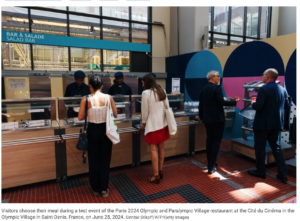
Politicians are finally waking up to the reality that cell phones are destroying our youth. Most of us have realized this for quite some time, but legislation to address the problem has been slow in coming.
The U.S. Surgeon General, Dr. Vivek Murthy, may have been the motivating force that changed all that. In June, Dr. Murthy called for warning labels on social-media platforms, saying urgent action is needed to address a mental health emergency involving young people. Murthy says warning labels, similar to those on alcohol and tobacco products, should accompany platforms to “regularly remind parents that social media has not been proved safe.”
The negative impact cell phones have on education has been equally obvious for quite some time. Finally, state education officials are stepping up to solve this problem that threatens the education of our future generations.
Mark Bauerlein, writing in The Epoch Times, tells us on September 3, South Carolina Board of Education approved a new policy to “create a phone-free environment” in public schools throughout the state. He says it is altogether clear on the negative impact of phones in kids’ hands. They are “electronic distractions,” says the policy, a threat to “focus and engagement.” We have no talk here of how handy the devices are, how they bring the universe of knowledge to a teenager’s eyes with a few taps. Those rosy descriptions of equipped youth that were so common a dozen years ago are missing. The policy is blunt and firm. A kid who sneaks a phone into a classroom “will be subject to progressive consequences in the student code of conduct and disciplinary enforcement procedures.”
This represents a major shift in attitudes across the country. Similar bans have already been passed in Arkansas, Florida, Indiana, and Louisiana. In July, Virginia Gov. Glenn Youngkin sent out an executive order stating “the necessity of implementing cell phone-free education in Virginia’s K–12 public schools.” Last month, California Gov. Gavin Newsom sent a letter to all schools decrying “the pervasive use of smartphones in schools.” New York Gov. Kathy Hochul and New York City Public Schools Chancellor David Banks are pushing bans, too, and 350 schools in the state have already established prescriptions of their own.
This shows this movement is not just one of one political party, but across the ideological spectrum, from liberal California to conservative Florida. Both parties have come to realize the cell phone in the classroom represents a threat to the education of our future generations. Baurlein says, “As phone use moved down the age ladder, test scores fell and emotional problems rose. The impairments were there for all to see 10 years ago. Only the titanic force of Silicon Valley marketing coupled with ordinary human frailty maintained the cachet of the phone long past its expiration date. Now that the awareness has reached the very top politicians, not just researchers and intellectuals of a skeptical bent, the truth is out and the right steps are being taken.”
Now the burden falls on parents, where it should have always been. Parents need to put limits on cell phone use at home, especially at the dinner table. My wife and I recently had dinner at a restaurant and the table next to us was four teenagers with their parents and all six were engrossed in their cell phones! Not a word of conversation between them. The dinner table has always been a time of connecting with friends and family – not with your cell phone!
These new state policies on cell phone use in the classroom give teachers a chance to take back control of their classroom and make learning the primary focus of school. What a novel idea!



